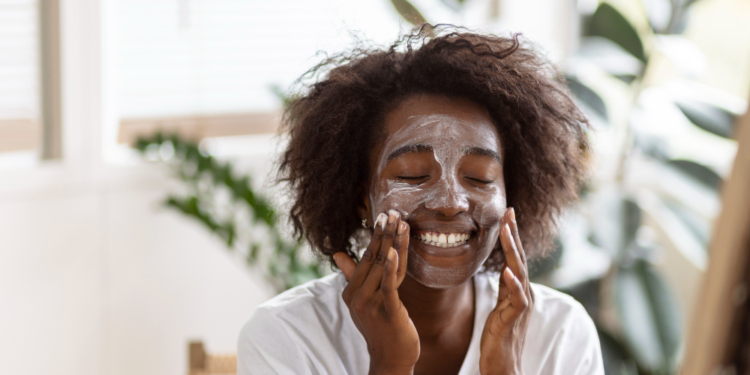Do you dream of having smooth and radiant skin that turns heads? Look no further! The key to a vibrant complexion at any age is exfoliation. This essential practice accelerates skin cell turnover, which naturally slows down as we age. By removing the skin’s outer layer of dead cells, exfoliation leaves your skin looking smoother, clearer, and more luminous. The best part? It’s suitable for all skin types, from oily and acne-prone to dry and sensitive. However, it’s surprising that nearly half of women neglect this game-changing step in their skincare routines, according to a survey.
What is Exfoliation?
Exfoliation is the process of removing dead skin cells, which can be achieved through mechanical or chemical methods. Mechanical exfoliation includes using products like face scrubs, polishes, cleansing brushes, microdermabrasion, and dermaplaning. These techniques physically lift and eliminate dead cells and dirt through friction. The key ingredients in these products are abrasive particles or granules like fine sugar, salt, nut shells, cornmeal, or natural substances such as silica or jojoba beads.
On the other hand, chemical exfoliation involves treatments like face peels, cleansers, toners, masks, and leave-on skincare products (serums and moisturizers) containing acids or enzymes. These substances loosen the bonds between dead skin cells, making them easier to dislodge. Key ingredients in chemical exfoliants are alpha hydroxy acids (AHAs), like glycolic, lactic, citric, and mandelic acids, beta hydroxy acids (BHAs), such as salicylic acid, and gentle enzymes derived from fruits like papaya.
Combining exfoliants offer the best of both worlds for those seeking a balanced approach. These rinse-off exfoliators contain a mix of physical and chemical exfoliant ingredients, ensuring a well-rounded exfoliation experience.
Choosing the Right Exfoliation Method
Selecting the method that suits your skin type is key to successful exfoliation. Here’s a guide to help you make the right choice:
Dry or Sensitive Skin
If you have dry or sensitive skin, opt for a physical exfoliant. Experts recommends physical exfoliators for these skin types to improve texture without irritating.
Oily Skin
Choose a chemical exfoliant with BHAs or a combination exfoliant for those with oily skin. BHAs can help minimize breakouts and unclog pores. Combination exfoliants blend physical and chemical ingredients and are also suitable for oily skin.
Combination Skin
If your skin combines oily and dry areas, physical and chemical exfoliants can work for you. Begin with a sparing application to gauge your skin’s tolerance.
Mature Skin
For mature skin, opt for a chemical exfoliant with AHAs. These substances target anti-ageing concerns, such as boosting radiance, evening skin tone, and reducing wrinkles.
How often can I exfoliate my face?
It’s important to remember that excessive exfoliation can be harmful. Here’s a guideline for the recommended frequency of each exfoliation method:
Physical Exfoliants
Physical exfoliants can be used two to three times a week, either in the morning or evening after cleansing.
Chemical Exfoliants
Chemical exfoliants should be applied once a week for sensitive or dry skin. It can be used up to three times a week for other skin types, following the package instructions.
Combination Exfoliants
Combining exfoliants’ frequency varies according to the product’s instructions, ranging from once a week to daily. Always follow the recommended guidelines for the best results.
Exfoliating with Home Remedies
You can exfoliate your skin using homemade DIY treatments if you prefer natural methods. Ingredients like sugar and baking soda are commonly used for this purpose. However, it’s important to take precautions. Before applying homemade remedies to your face, conduct a patch test on a small, concealed area (e.g., along your jawline) to check for any adverse reactions. When applying these remedies, use a light touch and limit the duration of the application.
Best Practices for Safe Exfoliation
To ensure a successful and damage-free exfoliation experience, follow these guidelines:
Physical Exfoliation
- Begin by thoroughly cleansing your skin with a face wash.
- Apply a small amount of the exfoliant to damp skin in circular motions, using gentle pressure to prevent irritation and micro-tears.
- Avoid the eye area when applying the exfoliant.
- Rinse your face thoroughly and pat it dry with a towel.
Chemical Exfoliation
- Start by cleansing your skin with a face wash and allow it to dry completely.
- Apply the chemical exfoliant according to the package instructions, avoiding the eye area.
- Leave the product on for the specified duration.
- Follow the instructions to remove or leave the exfoliant on your skin.
When to Skip or Stop Exfoliating
There are certain situations when you should skip or temporarily stop exfoliating. Avoid exfoliating at home after professional treatments like chemical peels or microdermabrasion. It’s also wise to refrain from exfoliating when your skin is sunburned or during eczema or rosacea flare-ups. On exfoliation days, avoid skincare products that can sensitize your skin, such as retinol and vitamin C, or products containing acids like cleansers, toners, masks, serums, and moisturizers.
Remember that it’s best to introduce one type of exfoliator into your routine to prevent skin irritation and damage. If you’re using a face peel for one week, avoid using a face scrub or cleansing brush during the same period. If you notice any signs of irritation, such as redness or a rash, it’s time to take a break from exfoliation.
In conclusion, exfoliation is a powerful tool for radiant and youthful skin. By understanding your skin type and following the appropriate exfoliation method and frequency, you can unlock the secret to a glowing complexion.


Discussion about this post